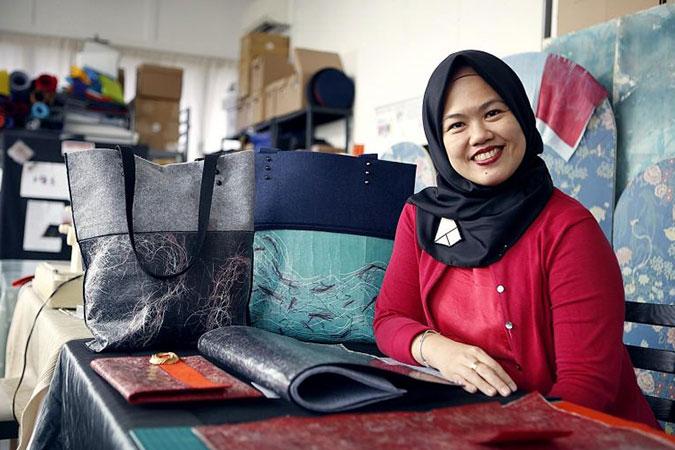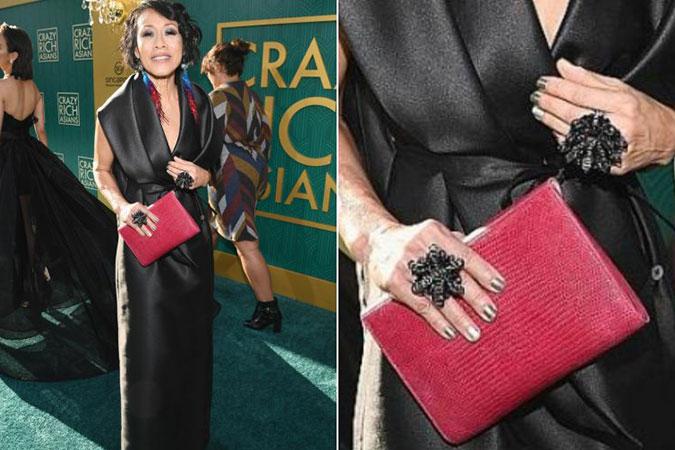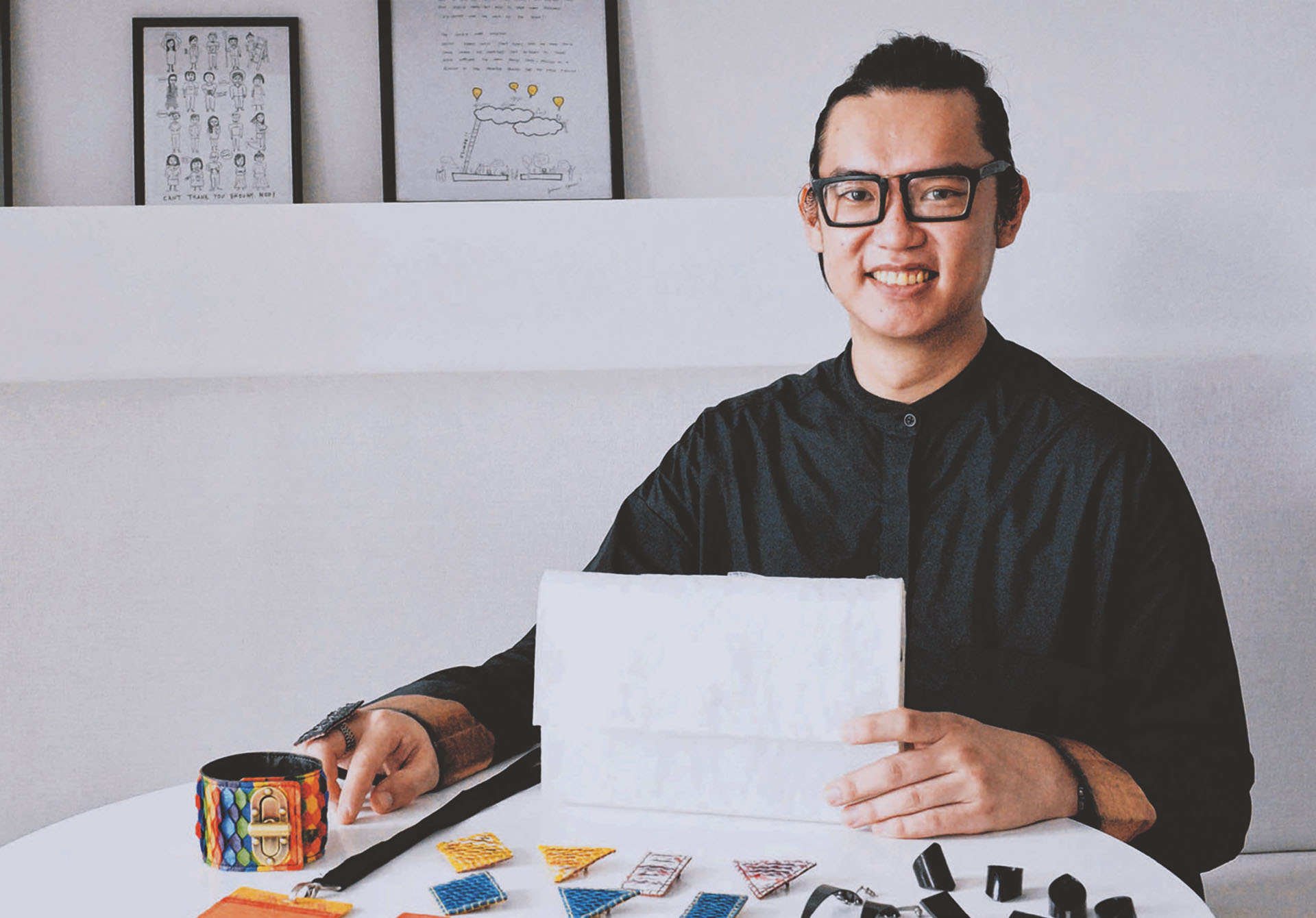Garbage bags and bubble wrap are not materials one usually associates with fashion. But two designers in Singapore are upcycling plastic waste into stylish accessories and bags.
Nasyitah Tan's Looms label makes clutches and totes from a combination of felt and bubble wrap, decorated with harvested thread, which is thread unravelled from material scraps.

Nasyitah Tan uses felt, bubble wrap and harvested threads for her bags. ST PHOTOS: AFP, SHINTARO TAY, ZHANG XUAN
Designer Heng Kang Yong's pieces have even made it to a Hollywood red carpet. Singaporean actress Tan Kheng Hua sported his funky cable-tie earrings and chainmail rings at the Los Angeles premiere of Crazy Rich Asians (2018).
Both designers are aware of the pitfalls involved in upcycling plastic waste. Heng, 31, says there is a need to fight the perception it is "junky" while Tan, 44, emphasises: "We got to make it pretty."
Stylist Daniel Boey, who picked Heng's pieces for Tan Kheng Hua's red-carpet look, says: "The appeal of Heng's pieces lie in the fact that they do not look recycled. When people wear recycled items, I don't think they want to look like they're wearing trash."
Heng's signature snakeskin effect, created by cutting fused garbage bags into small shapes and layering them, is a winner.
The disbelief on their faces when I tell them the 'reptile skin' or 'leather' is actually recycled plastic, is testament to the fact that there is a market for well-thought-out, well-designed recycled fashion pieces.
STYLIST DANIEL BOEY, on the reaction to Heng Kang Yong's accessories
Boey adds: "The amazing reactions when I put his pieces on celebrities, models and clients, and the disbelief on their faces when I tell them the 'reptile skin' or 'leather' is actually recycled plastic, is testament to the fact that there is a market for well-thought-out, well-designed recycled fashion pieces."
Tan is hoping this observation will be borne out as she is about to test a wider retail market for Looms products with an e-commerce shop, which will be launched on Aug 1. Prices for the products start at $50 for a wallet and goes up to $300 for a roomy tote.
The social enterprise, which helps lower-income women develop skills and confidence, has thus far been dependent on corporate commissions. But Tan wants to extend its reach, partly to provide work for the community she serves. Currently, Looms has about 15 staff, including permanent part-time staff, contract artisans and volunteers.
Both Heng and Tan stumbled into upcycling by accident.
Heng admits: "I didn't actively set out to be eco-friendly. I like to work with unconventional material. In the beginning, it was very budget. I wanted to find a material that's readily available. Trash was the way to go. And all you need is a laundry iron."
Tan's late mother was a seamstress, so she had lots of scrap material for her to play with: "There's so much life to small scraps."
She, too, stumbled upon fusing bubble wrap as a way to create an interesting effect with minimal effort. She points out that everyone has an iron at home, so this technique allows her contract artisans to work at home with minimal equipment requirements.
But now, the eco-friendly angle has become a selling point for them.
After Tan Kheng Hua was photographed wearing Heng's accessories, inquiries via his Instagram account (@theKANG.sg) have increased.

Heng Kang Yong's accessories, made from packaging plastic, were worn by Singaporean actress Tan Kheng Hua (above) at the Los Angeles premiere of the 2018 film, Crazy Rich Asians. PHOTOS: AFP/GETTY IMAGES, ZHANG XUAN
But while the duo have found modest success with their products, scaling up production is a challenge. Heng is a one-man show and he says: "I'm happy just to keep the momentum going and doing commissions."
The process of creating his snakeskin effect is very laborious and he takes a full day to get from the raw plastic bag to a fully stitched product. His prices start at $30 for a simple cardholder to $300 for a snakeskin-look clutch.
Besides staffing issues, supply is another challenge. Currently, both solicit donations of plastic waste.
But the waste needs to be clean. Heng works with contacts to get packaging plastic while Tan has a contact who donates boxes of bubble wrap. She also gets offcuts from tailors, "sometimes we get really nice brocades and silks", which is deconstructed into its component threads for decorative use.
Both are acutely aware of the contradictions of creating more products for consumption.
Tan points out: "People need things. We will always consume. But can we consume in a more mindful manner, can we choose things that use things in a more sustainable fashion?"
This article is produced in partnership with ST Life.
